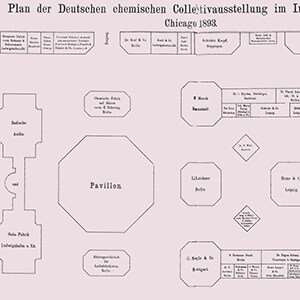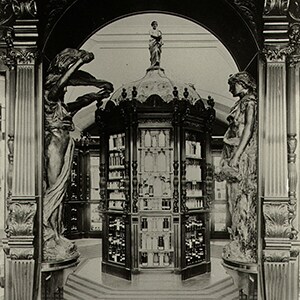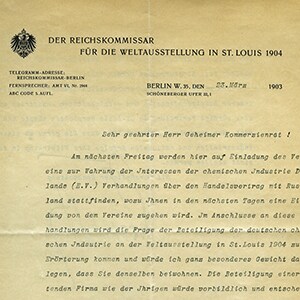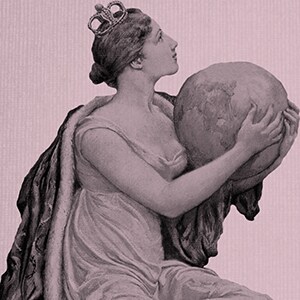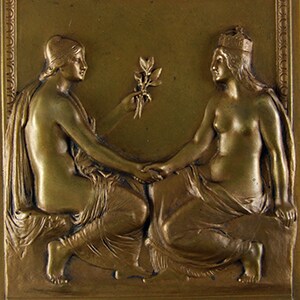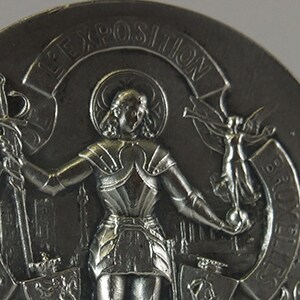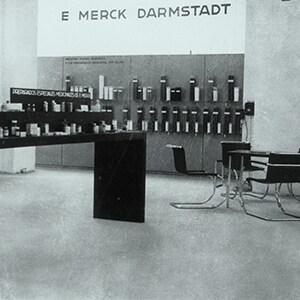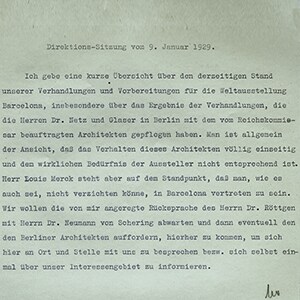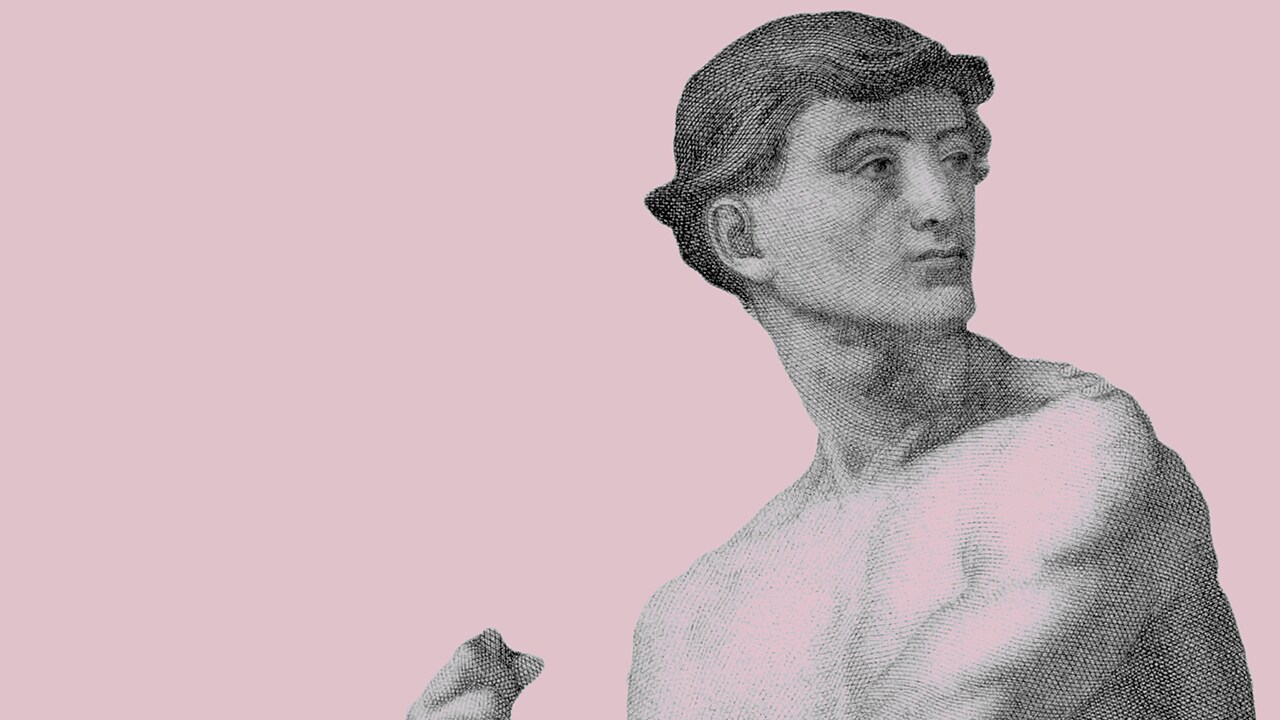
»However, be that as it may, Mr. Louis Merck takes the view that it is essential for the company to be represented [at the World’s Fair] in Barcelona.«
Board of Directors meeting, January 9, 1929
In 1851, the first World’s Fair is held from May to October in London. In order to house the around 14,000 exhibitors from 25 countries, British architect Joseph Paxton designs the Crystal Palace. This sensational building made of cast iron and plate glass is erected in Hyde Park. The exhibition heralds a new era in the trade fair industry. With spectacular attractions and a promenade reminiscent of a fair, they are above all designed with the general public in mind.
Alone the architectural wonders that are created for the exhibitions, such as the Rotunde in Vienna (1873), the Eiffel Tower in Paris (1889), the German Pavilion by Mies van der Rohe in Barcelona (1929), and the Atomium in Brussels, are legendary. For E. Merck, Darmstadt, Germany, too, participating in the sensational world’s fairs is an interesting and desirable prospect from the beginning. The company first takes part in the World’s Fairheld in New York in 1853, where the company receives a bronze medal with special recognition for the submitted alkaloids. Numerous medals, plaques and certificates such the Medal for Progress in Vienna (1873), and the Highest Awards in Sydney (1879) and Melbourne (1880) follow.
In 1893, the World’s Columbian Exposition is held in Chicago. Having only recently established a subsidiary in the United States, the company hopes to impress American customers with a grand appearance. To this end a large pavilion is constructed on the exhibition site, which exclusively shows nearly the entire range of company products.The partners of the company, too, show great interest, with Emanuel August Merck especially involved in the Paris (1900) and St. Louis (1904) fairs. For his efforts at these two events he is awarded a certificate issued personally in his name.
Between 1851 and 1935, the company attends a total of 12 world’s fairs and industrial exhibitions with its own stand. In doing so, the company underscores its cosmopolitanism early on. At the end of the 19th century, economic interests as well as liberalism and international free trade come to the fore. Connected to this is the hope that an open market will in turn lead to open cultural exchange, with goods transport laying the foundations for a mutual understanding between peoples. Through the shift in the global balance of power, however, the world’s fairs in the 20th century increasingly become a stage for imperial rivalry.
Newspapers make special mention of the quality of the German industrial exhibition at the World’s Columbian Exposition in Chicago in 1893, where the German participants win a quarter of all the awards. In order to draw attention to its first subsidiary in New York, the company showcases its products at the exposition with an elaborately designed pavilion.
Of the 1904 World’s Fair, the Reich Commissar writes to the company, »It would be extremely regrettable if one of our most important and highly developed industries were not to be worthily represented in St. Louis«. The company presents its products at multiple exhibits there and receives several awards.
Artistic medals are proof of the achievement and international engagement of the Darmstadt company. In 1929, Louis Merck is convinced of the importance of taking part in a world’s fair. At the end of the 20th century, new technologies increasingly take a backseat at world’s fairs, as entertaining fair visitors becomes more important.


